The history of Russia has several major periods such as: Kievan Rus, the Moscow Rise period, Russian Empire, the Soviet Union, Russian Federation. The key events of Russian history were the adoption of Christianity from Byzantium Empire, the Mongol conquest of Russia, the Moscow Rise period, peasants serfdom, reforms of Peter the Great, communism, reforms of 1990-th.
Russian History – The Ancient Ruses: 7th to 13th Century
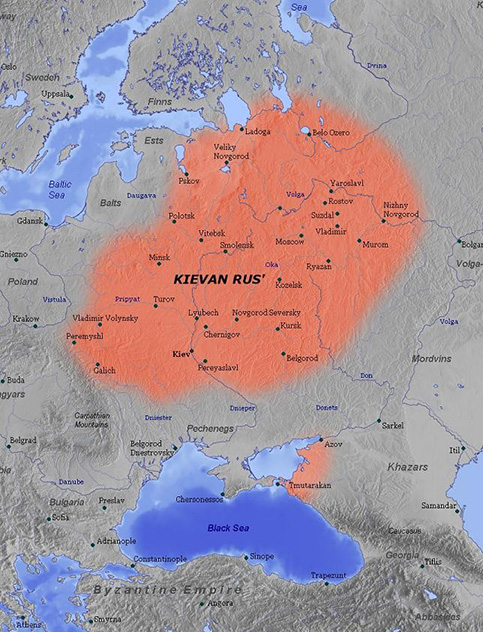
Russian History: Kievan Rus Territory
The Tribes of Eastern Slavs – the ancient ancestors of Russians occupied Eastern European Valley around 7th century. Slavs inhabited the valley and but step by step they became the dominant power.
Russians or Ruses were one of the smaller Slavic tribes, but somehow this name was applied later for the great number of people who settled in the area between Baltic, White, Caspian and Black seas.
The Ruses ascribed supernatural powers to the nature and the Gods they believed in were all named after the sun, the water, the earth… There was a very strong connection to the land and nature and it can still be felt in the language: there are many words to describe forests, fields, sky, water, etc.
The first known East Slavic state emerged in 862 along the Dnepr river valley. Prince Rurik founded the state with the capital in town Kiev that is why the country was called Kievan Rus. Other major cities of Slavs were Suzdal, Chernigov, Rostov, Vladimir, Novgorod. Kievan Rus soon united most of East Slavic lands. In 869 ruler of Kievan Rus’ prince Vladimir adopted Christianity as a dominant religion of the state. Rus adopted Christianity from Byzantium and with their religion we adopted much of their culture. It is believed that lack of personal freedom, domination of the state and absolute power of the leaders partly is a result of Byzantium influence.
Unfortunately Kievan Rus remained united just for two centuries. The ruling clan was rapidly growing and every prince wanted to get his part of the land. Moreover, regional centers became powerful enough to claim independence from Kiev. So, finally Kievan Rus transformed into the bulk of independent and aggressive principalities. The most powerful were Vladimirskoe principality, Galicia and Novgorod republic.
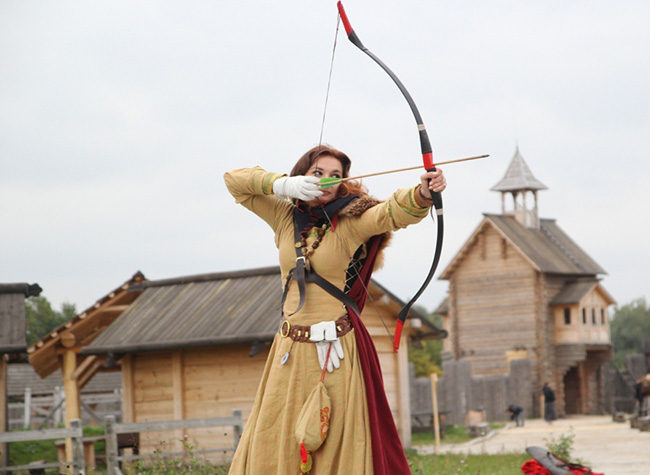
The History of Russia – Kievan Rus Park
You can visit the Keivan Rus Park yourself and see with your own eyes the way people lived thousand years ago and even learn the ancient crafts.
Russian History – The Mongol Yoke: 13th to 15th Century
In 13th century Kievan Rus was attacked by Mongol Empire. The separate armies of principalities were defeated one by one. As a result most of Tretyakov Gallery, Moscow Russian principalities were vassalized by Mongol Empire. Republic of Novgorod was the only region which remained independent.
Mongol occupation which lasted about 200 years is considered to be crucial for the development of Russia. This invasion lead to further disintegration of Kievan Rus – princes had no use cooperating with each other, all their problems were solved by Mongols.
Also, the two centuries of the occupation by Asian invaders influenced culture much and made Russia more different from the rest of Europe. The autocracy of Mongols easily implemented in our culture, we also gained the inclination to collective actions and decisions making, rather than to individual ones.
Under Mongols small regional center Moscow developed rapidly. Moscow was just one of many small towns at north east borders of Kievan Rus. However several trade routes passed through the town. The other advantage of Moscow was a remote and forested location, which prevented frequent Mongol attacks. Prince Daniil inherited a tiny principality of Moscow in 1303. He widely used the advantages of Moscow and started the development of Moscow as a regional center. Daniil and his descendants managed to establish a good relations with Mongols and used the decline of old principalities to increase the wealth and power of Moscow. Finally, to the end of 15th century Moscow gained control over the most of Russian lands. Moscow became powerful enough to claim independence. The key battle versus Mongols took part in 1480 at Kulikovo field near Dnepr river. Russians defeated Mongols and Moscow became independent state.
Moscow consolidated all ethnically Russian lands in 16th century and started exploring further.
The Russian History – The Period of Expansion: 16th to 18th Century
Under the famous tsar Ivan The Terrible (Ivan Groznyy) Russia conquered Tartar states along Volga river and acquired access to Caspian sea. The colonization of Siberia was also started. Unfortunately the never lasting wars had the devastating effect on Moscow. Moreover ancient ruling clan of Rurikovichy born out in the beginning of 17th century. There was a growing instability in Moscow Russian elites failed to produce a suitable strategy for the developing of the state, there was no widely accepted leader to become a new tsar. As a result Civil War had started in Moscow.
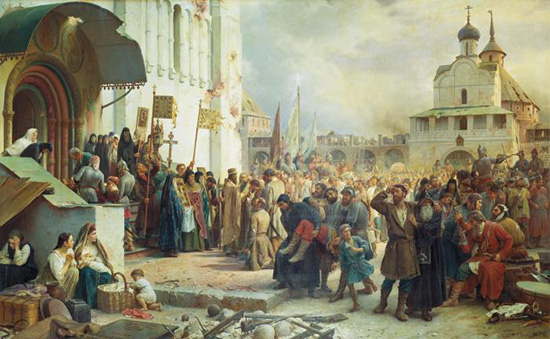
History of Russia – Smutnoye Vremya
Period of chaos and civil war has lasted from 1598 till 1613. That period of Russian history was called Time of Troubles (Smutnoye Vremya). There were many candidates who fought for the crown. People were unhappy and insecure, famine started. Unstable situation in Moscow was used by Sweden and Poland to declare war on Russia. Moscow lost control over western territories and even Moscow itself was captured be Poles in 1610. However Russia managed to survive. Russian army drove Poles out. Zemskiy Sobor was gathered (every area of Russia sent representative in Moscow to vote for new tsar) and proclaimed noble Mikhail Romanov to be a new tsar in 1613. The dynasty of Romanovs began their 300 years reign.
Early Romanovs had to restore the order in Moscow The peace treaties with Sweden and Poland were signed. The new legislation code was issued. According to the code every noble had to serve to the state. Landlords gained absolute power over their peasants. Peasants had no right to move from one landlord to another on their own. In a few words the serfdom was sanctioned by the state. City dwellers could not change their occupation or move from one town to another. Everyone in Moscow had the obligations however most of the rights were handed by tsar and nobility. Moscow became stable, conservative and closed structure.
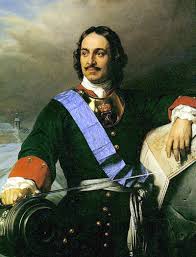
Russian History: Peter the Great
In 1682 tsar Peter the Great started to reign in Russia. He believed that only through intensive contacts with Europe and European style reforms Russia can be successfully developed. Peter the Great stimulated Russian nobles to get education in Europe. He hired hundreds of officers, engineers and scientists all over Europe to serve in Russia. The connections with Europe though were unstable cause all the routes passed through Poland and Sweden which prevented the development of Russia. The only chance for Russia to get rid of their influence was to get access to Baltic sea, establish port there and acquire the direct link to Western Europe. However with the archaic Russian army and no navy at all Peter failed in the first attempts to conquered needed territories. He was forced to reform the army and equip it with modern weapon and tactics as well as establish Russian navy. The reorganized forces crashed Swedes and Russia acquired access to Baltic sea. The port of Saint-Petersburg was founded at the newly acquired territories in 1703 straight after the war. Saint-Petersburg was rapidly growing and in several years Peter moved capital here to his beloved city from conservative Moscow. Apart from successful foreign affairs, Peter developed the country much. He reformed government structure and system of courts. He put Orthodox Church under the state control. He obliged nobles to get education and founded national Academy of Science. Peter the Great forced the development of Russia, under his rule Russia became powerful state armed with modern institutions and technologies. In 1721 Peter proclaimed Russia an Empire and became the Emperor.
Russian History – 19th Century – Decembrists, End of the Serfdom, Reforms
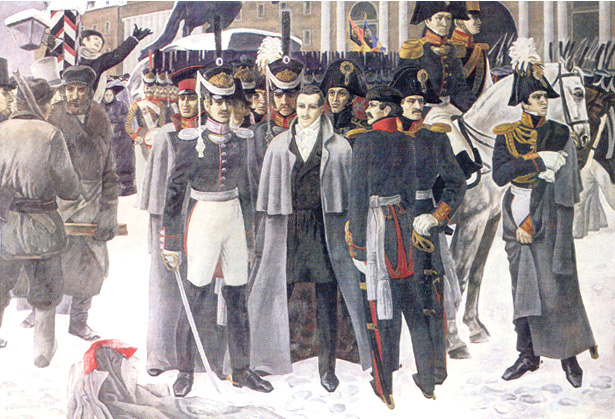
Russian History – 19th Century – Decembrists
After the death of Peter the Great and until the second half of 19th century Russia remained ambitious and aggressive empire. Russian Emperors were focused on expanding the territory and military power of the state. Russian armies fought versus Prussia, Ottoman Empire, France, Persia, Sweden. As the result of these wars Russia joined Crimea, part of Poland, Georgia, Northern Caucuses, Finland, more territories in Siberia. Domestic policy was not so successful. The power of the emperor was still absolute while peasants remained in serfdom and this troubled the economical development. Several well-educated nobles wished to reform the country in a France revolution way but their projects were not used.
They attempted to make a revolution but their armed revolts in 1825 in Saint-Petersburg and Ukraine were easily defeated by the state. Because the riot happened December, the rebels were called Decembrists. It took about 60 years for the state to get ready for the reforms. Emperor Alexander the Second issued the bill granting personal freedom to the peasants only in 1861.
The second half of 19th century was marked with the growing instability in the state. Many oppositional parties as well as terrorist groups occurred. People demand further reforms – constitution and parliament. One of the countless oppositional parties raised in 1861 in Minsk. It was called then RSDRP (Russian Social-Democratic Party), later they started to call themselves Communists.
Russian History – the 20th century
The 20th century in Russia started with the catastrophe -Russia lost the war against Japan. Despite that Russia managed to sign a beneficial peace treaty (we had to pay a contribution and lost almost no territories), the consequences of the war were hard to underestimate. This failure showed the ineffectiveness of the state system and lead to the numerous riots and strikes all over Russia in 1905-1907. These two years lasted uprisings were so dangerous for Empire that later were called the First Russian Revolution. State managed to calm down the riots. But as a result emperor Nikolay the Second established a Russian Parliament – Duma and granted certain rights and freedoms to the nation. Nikolay also supported the new prime minister Petr Stolypin who was up to continue the reforms. Unfortunately the reforms were stopped when terrorist killed Stolypin in 1911.
Russian History – the First Half of the 20th Century
The First World War started in 1914, Russia was allied with UK and France and fought versus Germany, Austro-Hungarian Empire and Turkey. This war changed completely the map of Europe and lead to the collapse of Russian Empire as well. Emperor Nikolay the Second handled the power to the Temporary Government on February 27th 1917. The Temporary government attempted to gain control over the country, but it was supported by the bourgeois only. The situation was used by the Bolsheviks who got popularity among soldiers and workers because of their populist slogans and charismatic leader Vladimir Lenin. Bolsheviks revolted on October 25th 1917. It took four more years of Civil war for Bolsheviks to get control over the whole Russia. To the end of this period Russian republic was completely devastated. Millions of people were killed, industry collapsed, famine started, Russia lost control over Poland, Finland, Lithuania, Estonia and Latvia.
Iosef Stalin became the head of the Communist party and the state in 1922 right after the death of Lenin. Soon, the new state was proclaimed – Union of Soviet Socialist Republics.
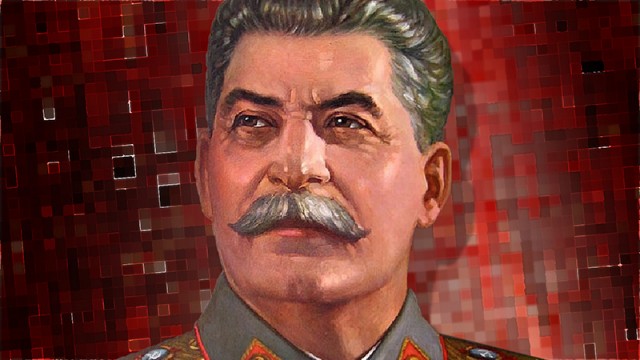
Russian History – Iosef Stalin
Under Stalin the Soviet Union developed heavy industry, sciences, nuclear technologies. Stalin transformed the weak and ruined agricultural country into the powerful industrial state. The forced industrialization claimed a high price. Most of the population lived in misery, millions of peasants died cause state confiscated all their supplies to feed workers. Many millions of people who were critic sizing the system were jailed and died in prisons. The other specialty of Soviet industrialization was heavy industry orientation. Stalin believed that powerful army is most important for the state, so heavy industry emerged. However the consumer goods industry was stagnant. There was lack of food in the country either.
Russian History: 2nd World War – 20th Century
Hitler declared the war on Russia on June 22nd 1941. During the first phase of the war Germany army defeated Red Army, blocked St .Petersburg and came as close as 30km to Moscow. Red army stopped Germans only in 1943 at the Battle for Stalingrad and started its victorious reconquest of the Soviet Union and Eastern Europe which was finished on May 9th 1945. USSR lost about 25 million people in that war, country was ruined but USSR gained the status of superpower and one of the leading country of the world. Soon after the war former allies became enemies. USSR and USA had different point of view on the European future. The new War could start any minute and the world lived under that threat till 80th.
Soviet leaders which followed Stalin followed his ideas – they developed the army and the industry and sciences which served army needs. They regulated people’s day to day life with ideology and still proclaimed Communism as the nearest and desirable future of USSR. However they were different in a way. Khrushchev accepted that Stalin’s regime was too cruel and tried to make everyday life of people better, Brezhnev was too conservative and inefficient, Andropov tried to make Russians effective workers but failed. Finally Gorbachov went in charge. He had an idea that the country must be reformed. He started with the policy of glasnost’- free public access to information and perestroika – implementing democratic principles into the state system. But instead of the reforming USSR this lead to the collapse of the state. When people found out what is going on in USSR they just gave it up and in the 1991 the country ceased to exist. Instead of USSR 15 independent states were proclaimed, Russian Federation became the largest successor of former Union and was headed by the president Boris Yeltsin.
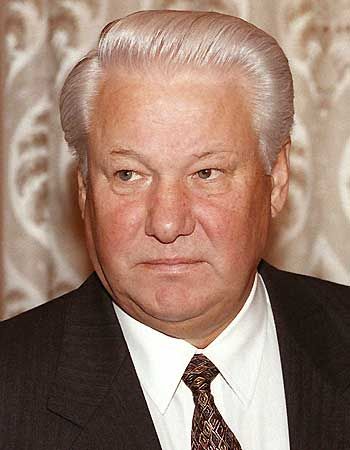
History of Russia – Yeltsin
Yeltsin ruled for 8 years. Under Yeltsin the country completely changed. Russia accepted democracy and capitalism as well as new constitution. Everybody was free to choose life philosophy and ideology. Everyone was free to do anything. That was a time of unlimited freedom and almost no regulations of the state. This lead to the stagnation of economy, shocking price rise and mass unemployment. But by the end of the 90s the country passed through several crisises and steady economical growth has started. The second president of Russia Vladimir Putin is opt to make Russia powerful economy. We will see…
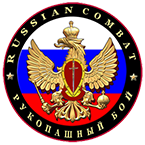




Leave a Reply